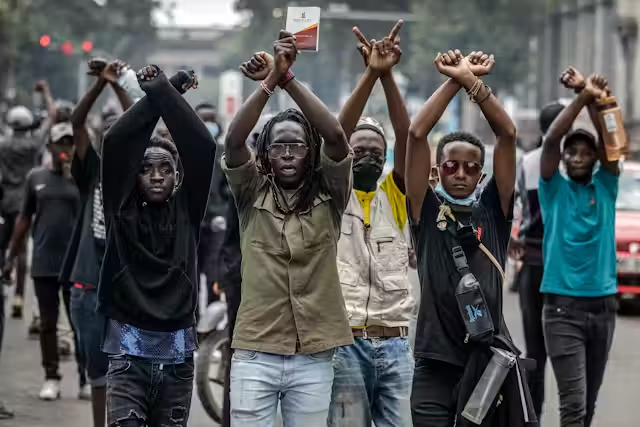It is projected that by 2030, young people in Africa will make up 42% of global youth, and more than 60% of Africa’s population under the age of 25. Sub-Saharan Africa is especially the hot spot for growing birth rates.
Such demographic trends will give the continent a quarter of the world’s population and a third of its labor force by 2050, and 40 percent of the global population by 2100 researchers have predicted. As if to give credence to the above demographic projections, the recently concluded Uganda population census 2024, trends indicate that young people, with children aged 0–17 years now make up 50.5% and youth aged 18–30 years constitute 22.7%. This means that 73.2 % of the population in Uganda is predominantly youthful in the age group 0-30 years of age.
Could such youth bulge be a crown of glory for Africa or a crown of thorns?
Well, in the canonical Gospels of Matthew (27:29), Mark (15:17), and John (19:2); the Roman soldiers mockingly twisted and placed a crown of thorns on Jesus’ head during his passion. Although to the Roman soldiers, it was part of the punishment administered against the Jesus of Nazareth, further revelations assert that “The strong hands of God twisted the crown of thorns into a crown of glory; and in such hands we are safe.”
Who can then twist the fate of Africa?
Just like Jesus’ crown of thorns turned out an oxymoron; a “bittersweet” sensation, the Gen Z, may turn out an African phenomenon of pleasure with pain if no leadership hand twists it into a crown of glory for Africa.
Kenya’s massive protests led by Gen Z are awakening and very instructive of the looming danger that is to engulf Africa soon if nothing is done. Gen Z is a youth-led revolt, and about 80 percent of Kenya’s population is below the age of 35 years. Gen Z is representative of a sick population, tired of deferred promises of development by successive political leadership and governments in Africa. These youth seem angry and betrayed by cynical politicians, who mobilize them with blatantly false promises of jobs and entrepreneurial opportunities.
In the case of Kenya, President William Ruto’s campaign trumpeted the “hustler vs dynasty” narrative, highlighting the rich versus the poor gulf in Kenya’s society strata, while portraying himself as the latter’s unrelenting defender, President Ruto seems to be indicted by his support structures into power. His policies are seen ditching further the poor angry youth, leaving them with no hope but to stage an aggression against the bourgeoisie political rich of Kenya.
Such happenings in the affairs of our East African “strong economy”, have left no option except to turn these youth hustlers into a crown of thorns for Ruto’s Kenya.
We are reminded of Graca Machel’s charge on Africa; On Thursday, 1st November 2018, as chair of the African child policy forum, Graca warned that; “Africa could become the continent of a billion “angry, underfed, under-educated and under-employed” young people by 2050, unless African governments act to invest in their children”. Six years later, we see her statement resonating in perfect match with the happenings in Kenya under a revolt code-named Gen Z. Suppose such Graca’s proclamation remains the implicative description of the African youth bulge, how much more of its intensity shall it have by 2050? Kenya’s Gen Z is just a warning shot for African leaders.
It is agreeable nonetheless; that our youth have the potential to transform Africa, but if neglected, they could worsen poverty levels and inequality while threatening peace, security, and prosperity, for the reason that; research has accounted for the rise of conflict and terrorism with a large youth bulge, often worsened by issues such as youth unemployment. The lack of opportunities compels many of the youth to seek alternative means of income, leading some to join rebel movements.
The arm that shall twist Africa’s fate, needs to view African youth surge and demographic trend as a vehicle for policy formulation and research, shedding light on the societal implications of a sizeable youth population, plus designing strategies for youth empowerment and resilience building.
Demographics will fuel the continent’s rise in a world of shrinking populations in Western economies through conscious planning towards a youth empowerment agenda by providing young people with tools, resources, and opportunities to shape their educational journey, become agents of positive change, and develop leadership, critical thinking and creativity skills. Such Empowerment should transcend classroom-based theories to equip the youth with modern world-relevant skills including digital literacy, problem-solving innovations, and entrepreneurship; while promoting among them ideologies of interests rather than those of identity as preached by President Yoweri Museveni.
All stakeholders, including governments, civil society, and the international community must work together to create an enabling environment that provides youth with the necessary tools and opportunities to flourish. With the young African energy and creativity positively harnessed, Africa can shape a future marked by progress, prosperity, and equitable growth for all; otherwise, if the above is disregarded, Africa might wear a crown of thorns sooner than later!




